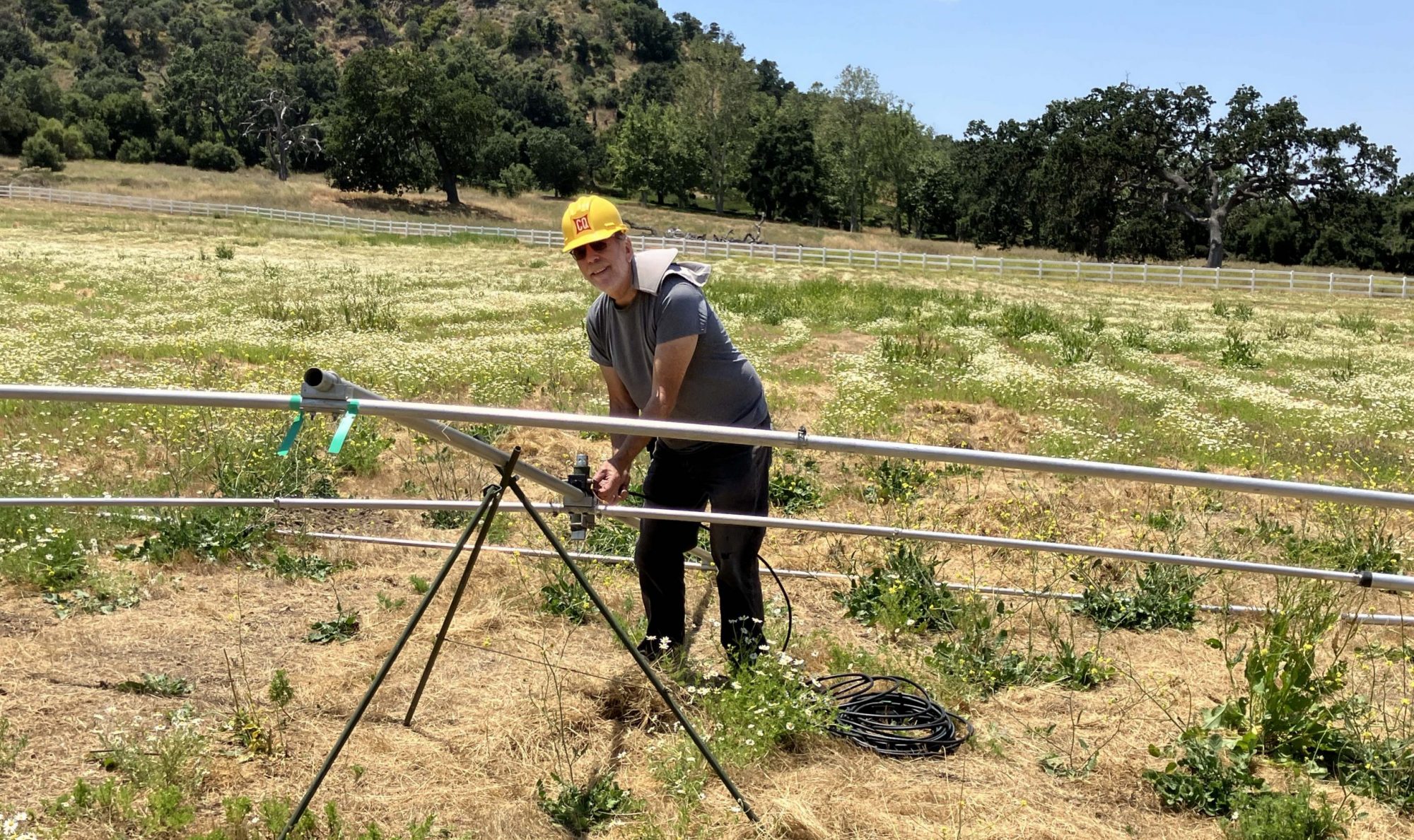
By Pete Heins-N6ZE
A cost-effective way to increase the number of bands a ham can access is to use a transverter. Imagine adding the capability of using FM, SSB, Packet, and FT-8, at a power level of 10 watts, on a frequency band which you have never had before – for just $70!
I did just that. I had been wanting the capability of operating on 222.1 MHz USB, while hill topping or walking on Tarantula Hill. I purchased a 10 meter to 135 cm transverter to take low power 10-meter (28 MHz) output from an HF rig and transvert it to 135 cm (222 MHz) and to take the 135 cm received signals and transvert them back down to 10 meters (28 MHz).
Most users of the commonly used weak signal portion of the 135 cm band operate near the 222.1 MHz SSB calling frequency with the SSB, CW and data modes. The FM calling frequency is 223.5 MHz simplex.
For short distance local communication with strong signals, FM is fine to use. Most of the equipment produced for the 135 cm band is FM only. Historically, little of the commercially available equipment for that band is designed for the so-called weak signal communication modes: SSB, CW and data. Superior communications distances with the weak signal modes sometimes reach to distances of 300 to 1000 miles and even more. The 135 cm band is a stepchild to most amateur radio frequency allocations because it can only be assigned in North and South America.
A note of caution: Many FM repeaters utilize frequencies between 224 and 225 MHz. Most 10-meter transceivers can only transmit from 28 MHz to 30 MHz, so effectively only the 222 – 224 MHz portion of the band can be used with this setup.
A small company in Ukraine, run by Serge Zhovtobrukh-UT5JCW, produces several small transverters to change 10-meter signals to 2 meters (144-148 MHz), 135 cm (222-225 MHz) and 70 cm (420-450 MHz). They are available in kit form or fully assembled (I recommend fully assembled) and are sold on E-Bay. For more specific information, check http://transverters-store.com/.
A power cable is provided, along with an extensive instruction manual. The only additional items needed are an antenna, coax feedline with a BNC connector and a short cable with BNC connector to connect the transverter to your HF rig. The transverter is powered by a 12-volt DC power supply or battery which can provide a max current draw of about 1.3 amps. (A small, rectangular 12V DC, 7ah motorcycle battery is perfect to use when hill topping.) To put the transverter into transmit mode, merely transmit with your HF radio because the transverter has automatic switching to place it in the transmit mode. Alternatively, you can use hard keying through a provided connector port. The easiest way to get on the air with this transverter is to use a Yaesu FT-817 QRP HF transceiver or the equivalent. By using a low watt QRP transceiver you don’t have to worry about reducing the power output to avoid overloading the input to the transverter. If you forget to lower the transmitter power level on a 100-watt transceiver, such as an FT-991, you will ruin the transverter with the high transmitted power.
After I ordered the transverter, it took almost a month to arrive. It arrived in a very strong shipping container and was packed extremely well.
I found out about this transverter from Steve Noll-WA6EJO in Ventura, who has utilized one for several months. When I went roving to Palos Verdes during the January ARRL VHF Contest, I easily communicated with him, and on FM at that!
See you all on 222.1 MHz!
